Townsend Courtney M.Jr., Evers B. Mark. Atlas of General Surgical Techniques: Expert Consult
Подождите немного. Документ загружается.

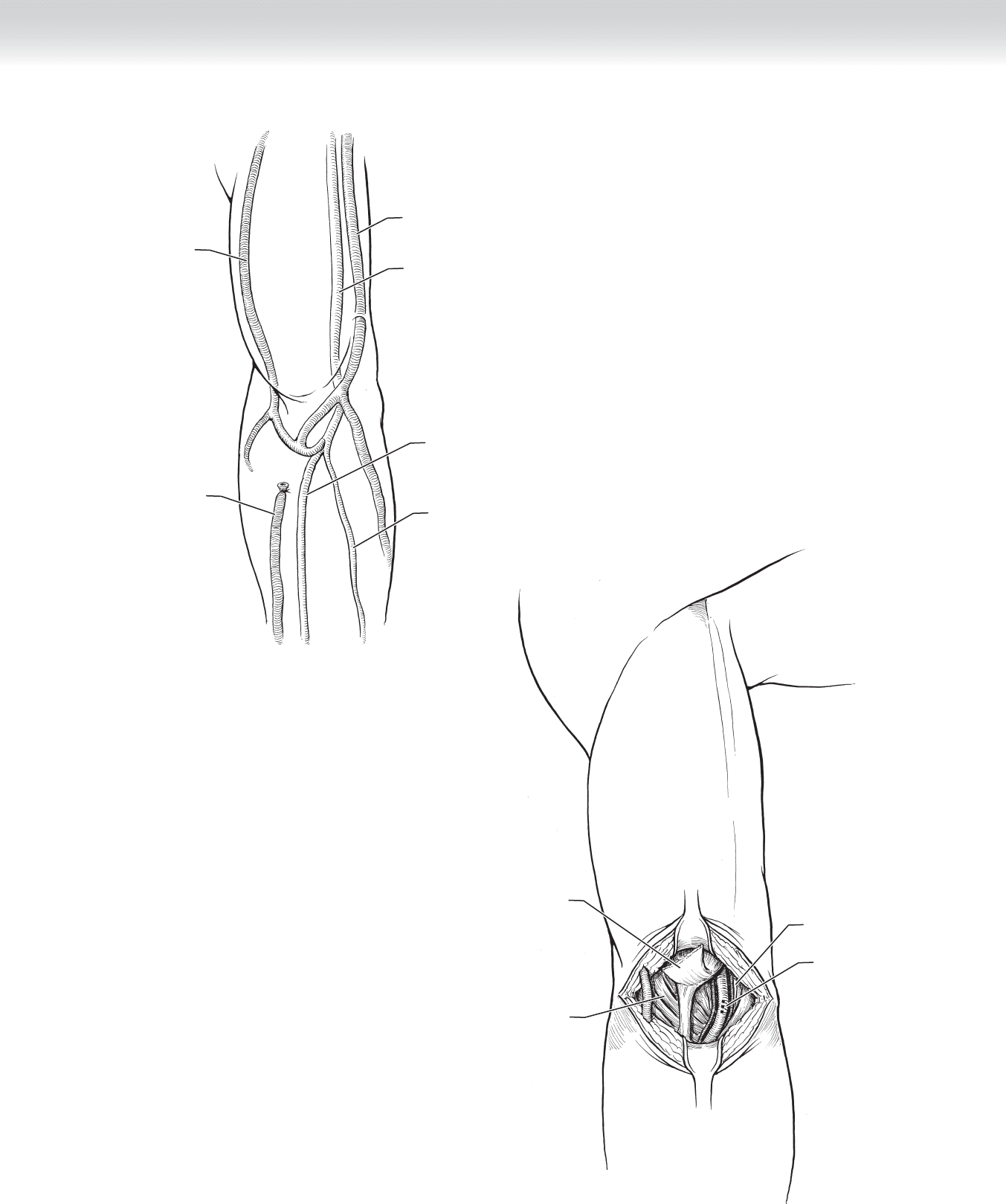
CHAPTER 90 • Hemodialysis Access Procedures 991
Cephalic vein
Cephalic vein
Radial artery
Basilic vein
Brachial artery
Ulnar artery
FIGURE 90 –9
Incision for
arteriotomy in
radial artery
Median nerve
Bicipital aponeurosis
Brachialis muscle
FIGURE 90 –10
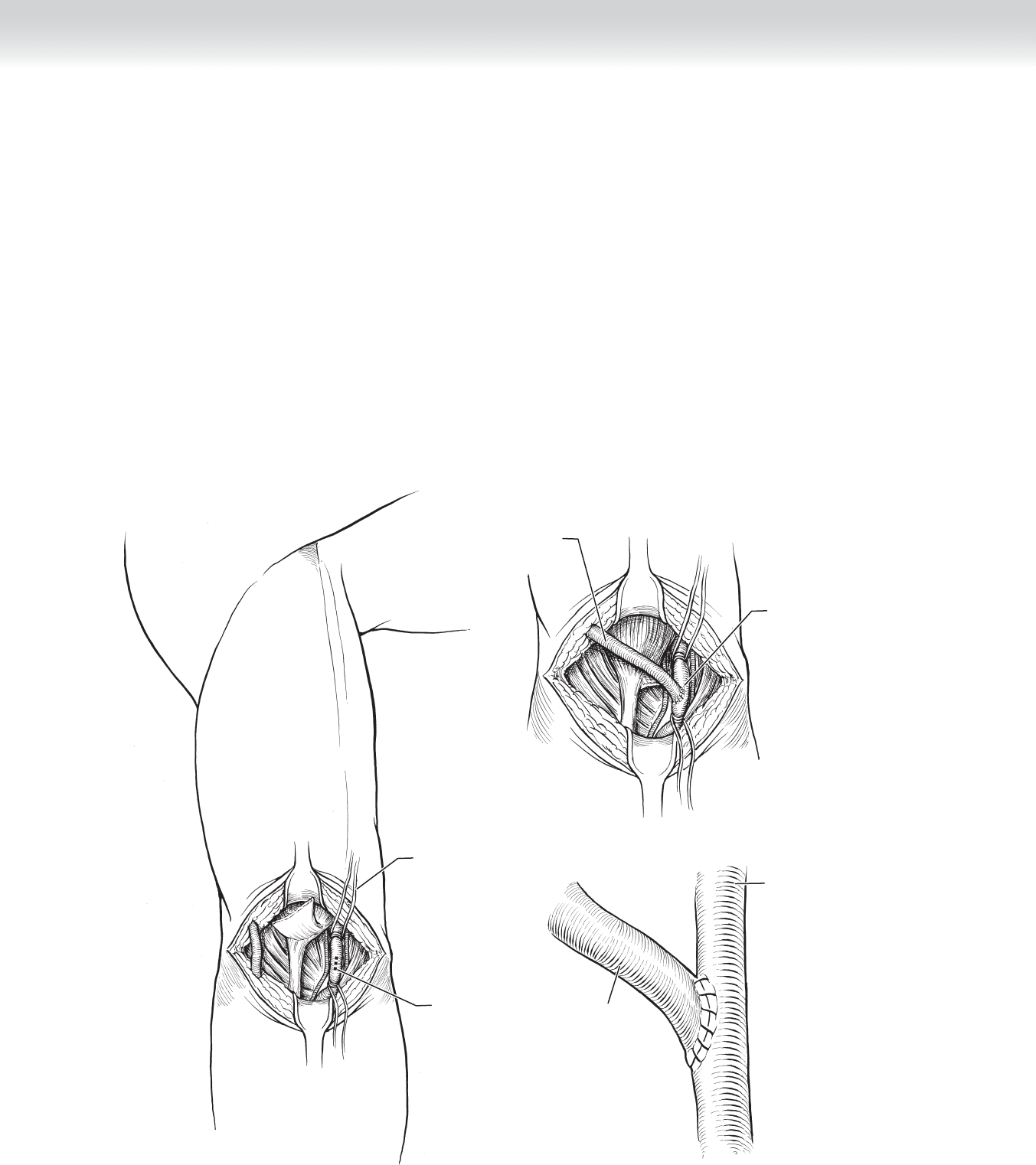
992 Section XII • Vascular
◆ An end-to-side anastomosis is performed with 6-0 Prolene suture (Figure 90-11).
◆ The clamps are removed, with the distal arterial clamp removed last. The proximal vein is
palpated for a thrill. Revision may be necessary if a thrill is not readily palpable. If the fi s-
tula is pulsatile without a thrill, a distal obstruction may be present. If the obstruction is
not from inadequate vein mobilization, a venogram may need to be performed.
3. CLOSURE
◆ The wound is closed in two layers with interrupted 3-0 Vicryl subcutaneous sutures and a
running 4-0 Monocryl subcuticular layer.
Incision for
arteriotomy in
radial artery
Vessel loop
Brachial artery
Cephalic
vein
Cephalic vein
Arteriovenous
end-to-side
anastomosis
FIGURE 90 –11
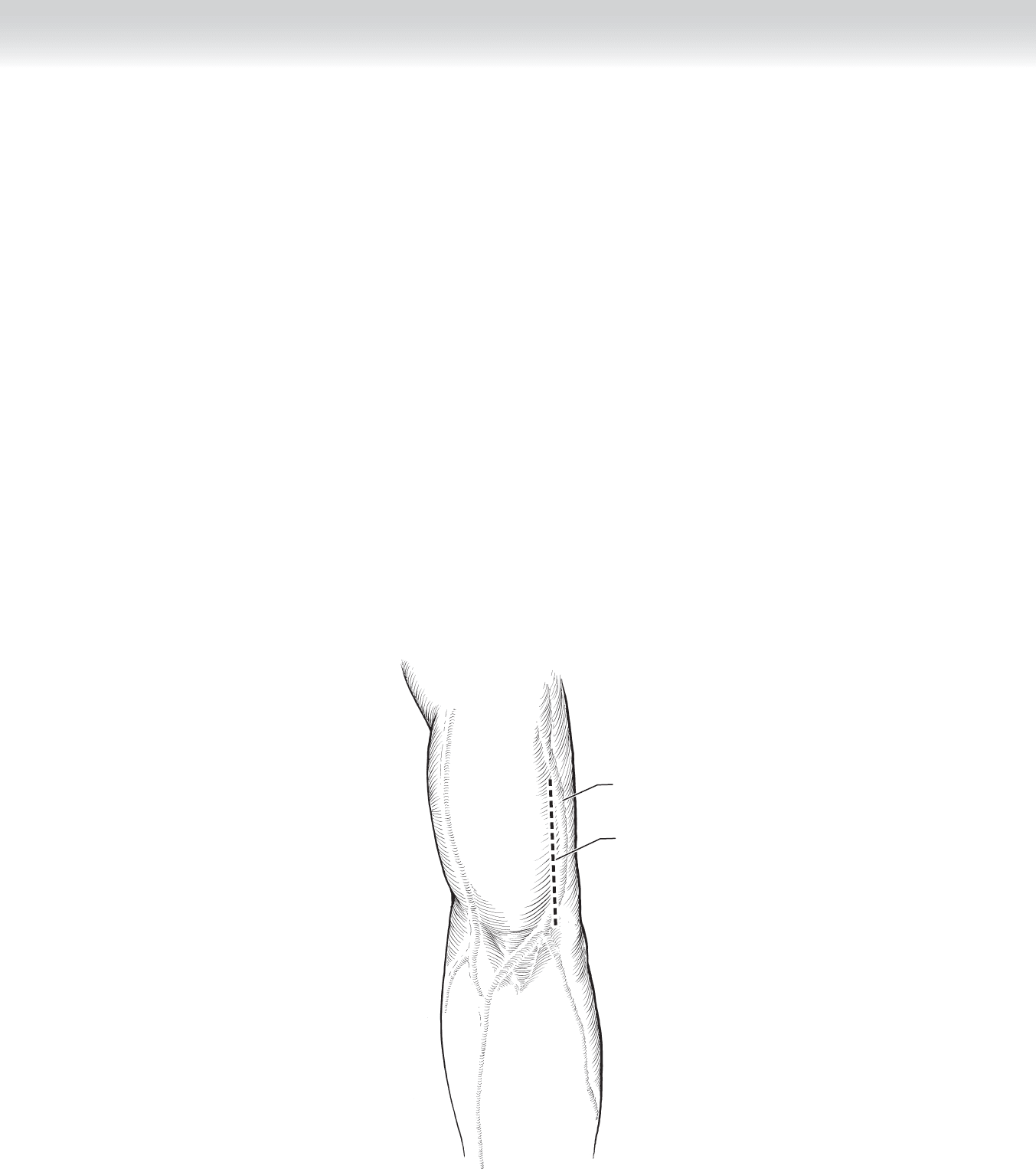
CHAPTER 90 • Hemodialysis Access Procedures 993
STEP 3: OPERATIVE STEPS—BRACHIOBASILIC UPPER ARM TRANSPOSITION
1. INCISION
◆ The patient is placed supine, with the arm placed on an arm board.
◆ Although any vein can be transposed, description of a brachiobasilic vein transposition is
offered as an example of the surgical principles involved in creating such fi stula. The exact
incision and dissection should be tailored to the anatomic sites involved.
◆ A longitudinal incision is made along the biceps groove, starting just proximal to the elbow,
with care taken to preserve the subcutaneous veins (Figure 90-12).
Basilic vein
Incision for
brachial artery
anastomosis
FIGURE 90 –12
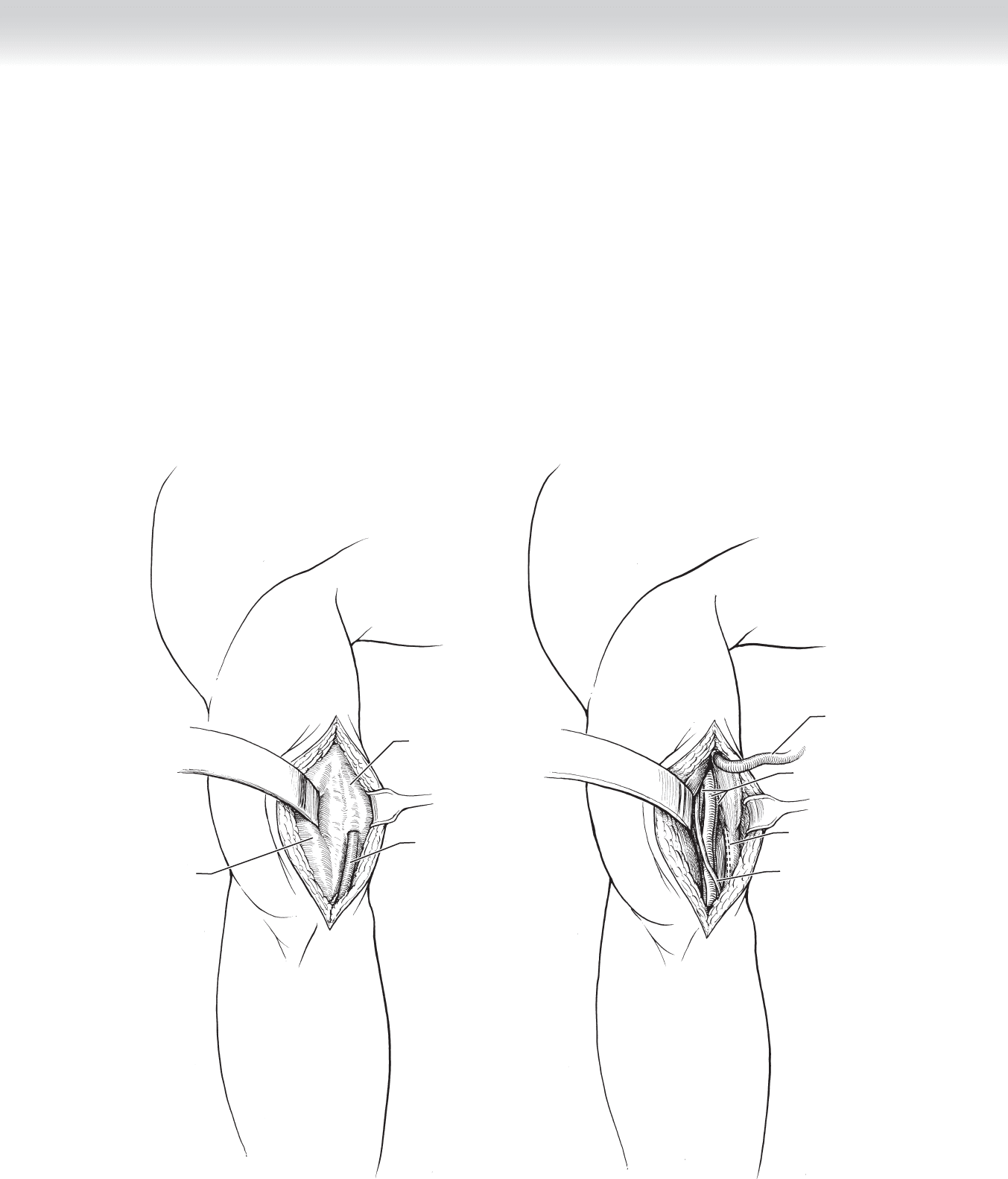
994 Section XII • Vascular
2. DISSECTION
◆ The basilic vein is identifi ed, mobilized, and assessed for adequacy (Figure 90-13).
◆ The deep fascia over the brachial sheath is divided, with care taken to preserve the median
and ulnar nerves (Figure 90-14).
◆ The brachial artery is identifi ed and isolated. Communicating veins overlaying the artery
may need to be divided to allow adequate control.
Brachial sheath
/
basilic vein
Basilic vein
Biceps muscle
FIGURE 90 –13
Mobilized
basilic vein
Brachial
artery and veins
Median nerve
Ulnar nerve
under fascia
FIGURE 90 –14
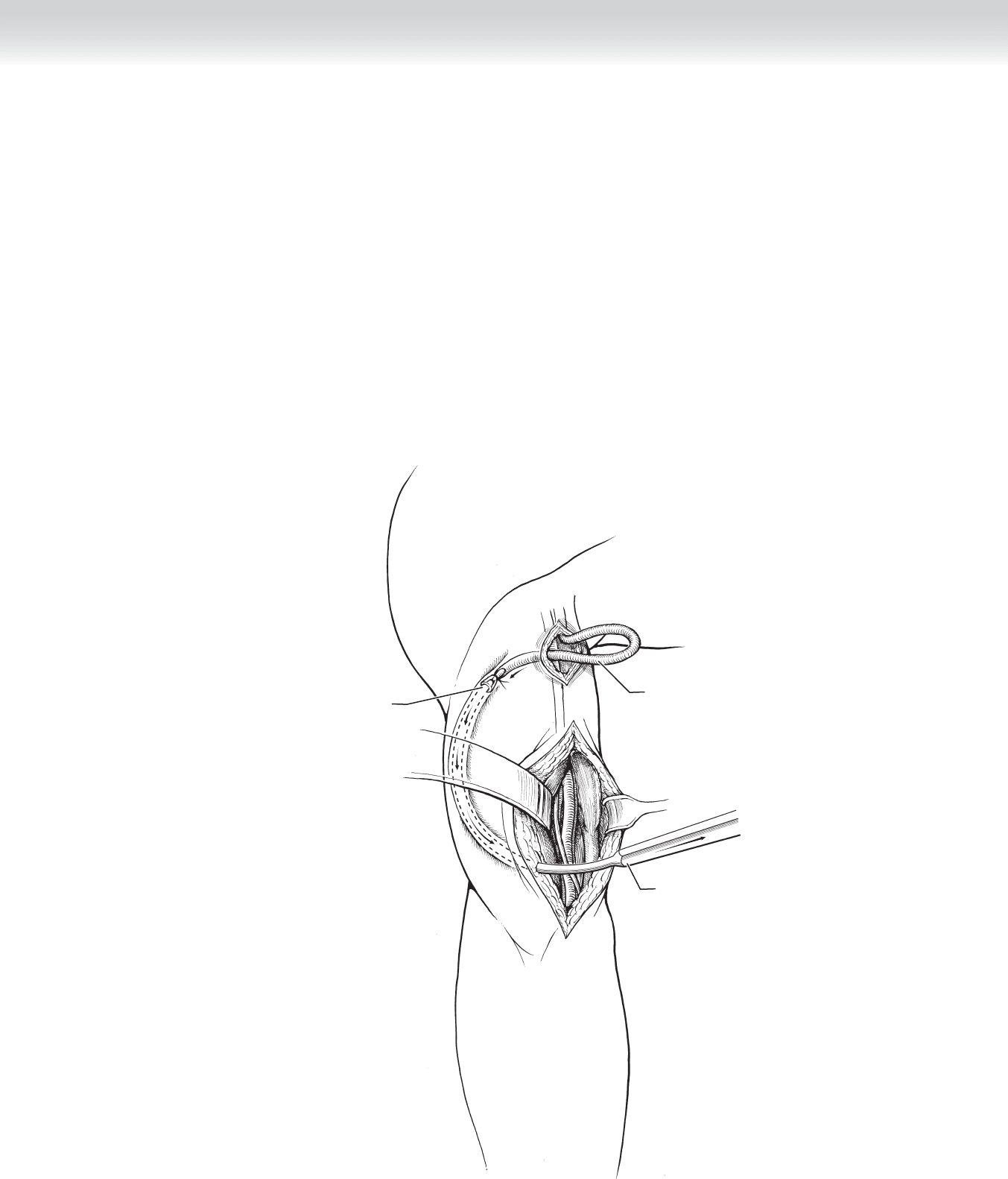
CHAPTER 90 • Hemodialysis Access Procedures 995
◆ The basilic vein is mobilized along its course as high as possible, with proximal extension
of the incision as needed. Side branches are ligated with silk suture and divided. Some
surgeons use skin bridges to minimize the size of the tissue fl ap. Sometimes, the basilic vein
joins with the brachial vein early, preventing signifi cant mobilization. If the vein is adequate
distally, additional mobilization of the basilic vein below the elbow may offer additional
length.
◆ The basilic vein is marked to prevent twisting. The vein is divided as distally as possible,
fl ushed with heparinized saline, and dilated manually. The vein is tunneled through the
subcutaneous tissue at a depth of approximately 4 mm (Figure 90-15).
◆ The patient is heparinized, and proximal and distal arterial clamps are placed.
Tunneler
handle
Basilic vein
Tunneler/
basilic vein
FIGURE 90 –15

996 Section XII • Vascular
◆ An end-to-side anastomosis is performed with 6-0 Prolene suture (Figure 90-16).
◆ The clamps are removed, with the distal arterial clamp removed last. The proximal vein is
palpated for a thrill. Revision may be necessary if a thrill is not readily palpable. If the vein
twisted in the tunnel, the anastomosis may need to be taken down and the vein retunneled.
If the fi stula is pulsatile without a thrill, a distal obstruction may be present. A venogram
can be performed to assess for stenotic lesions.
3. CLOSURE
◆ The wound is closed in two layers with interrupted 3-0 Vicryl subcutaneous sutures and a
running 4-0 Monocryl subcuticular layer.
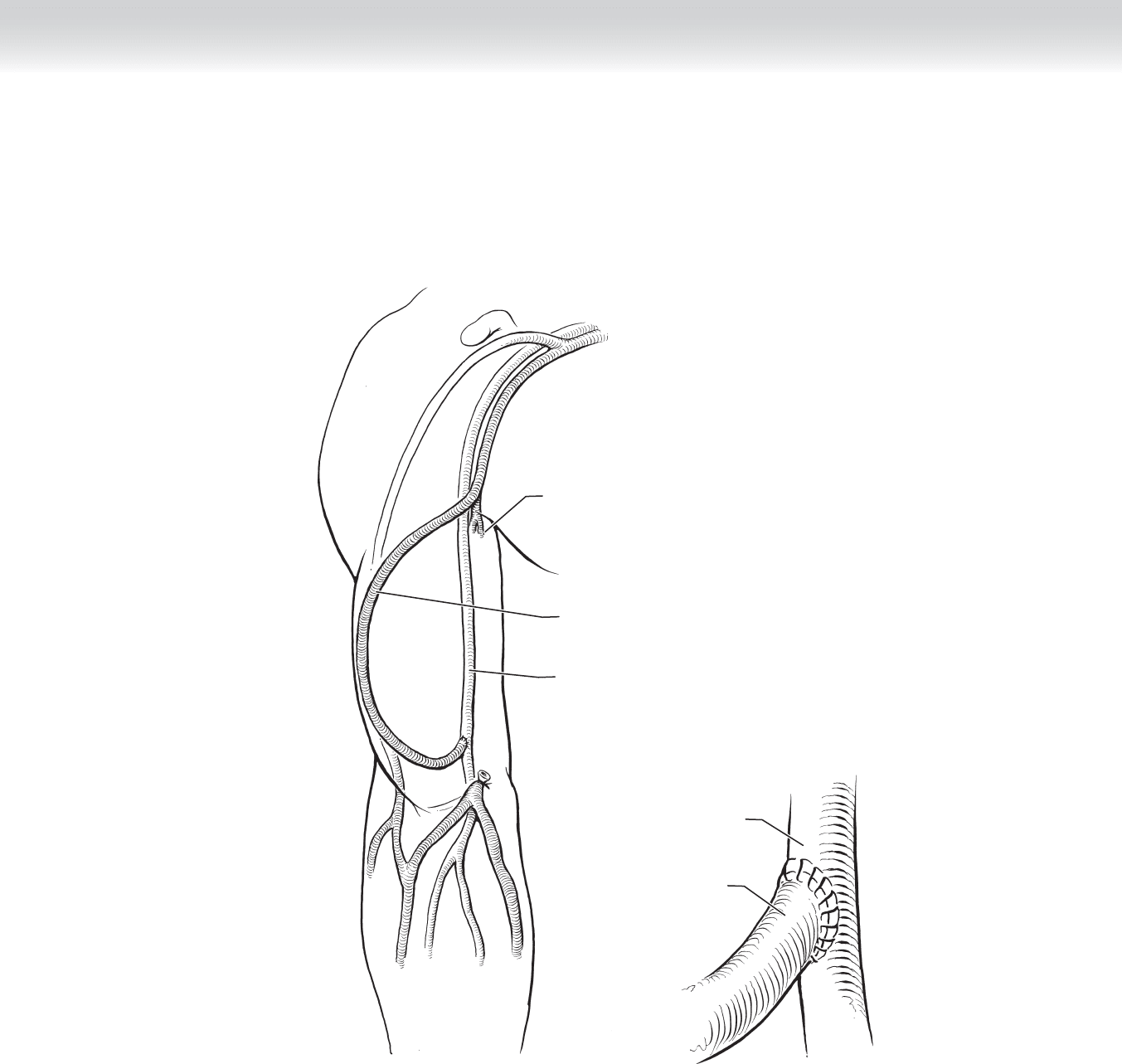
CHAPTER 90 • Hemodialysis Access Procedures 997
Brachial artery
Basilic vein
Brachial veins
Brachial artery
Basilic vein
FIGURE 90 –16

998 Section XII • Vascular
STEP 3: OPERATIVE STEPS—ARTERIOVENOUS GRAFTS
1. APPROACH AND INCISION
◆ Although primary arteriovenous fi stulae are preferred, some patients do not have adequate
veins to allow fi stula creation. In these cases, artifi cial conduit, most commonly standard
wall 6-mm polytetrafl uoroethylene (PTFE), is used. Occasionally, more distal PTFE grafts
can bridge to later arteriovenous fi stula creation by arterializing the downstream vein.
◆ Incisions are made according to the target vessels. Grafts may be placed in a looped,
curved, or straight confi guration, based on the availability of arterial infl ow and venous
outfl ow, as well as the anatomic position and future ease of access at the dialysis center.
Again, the principle of distal placement is followed. Grafts that cross joints or have a sharp
turn (e.g., a forearm hairpin turn) may require a short segment of ringed graft. Femoral
grafts are avoided if possible, because they may interfere with future kidney transplant
(Figures 90-17 through 90-21).
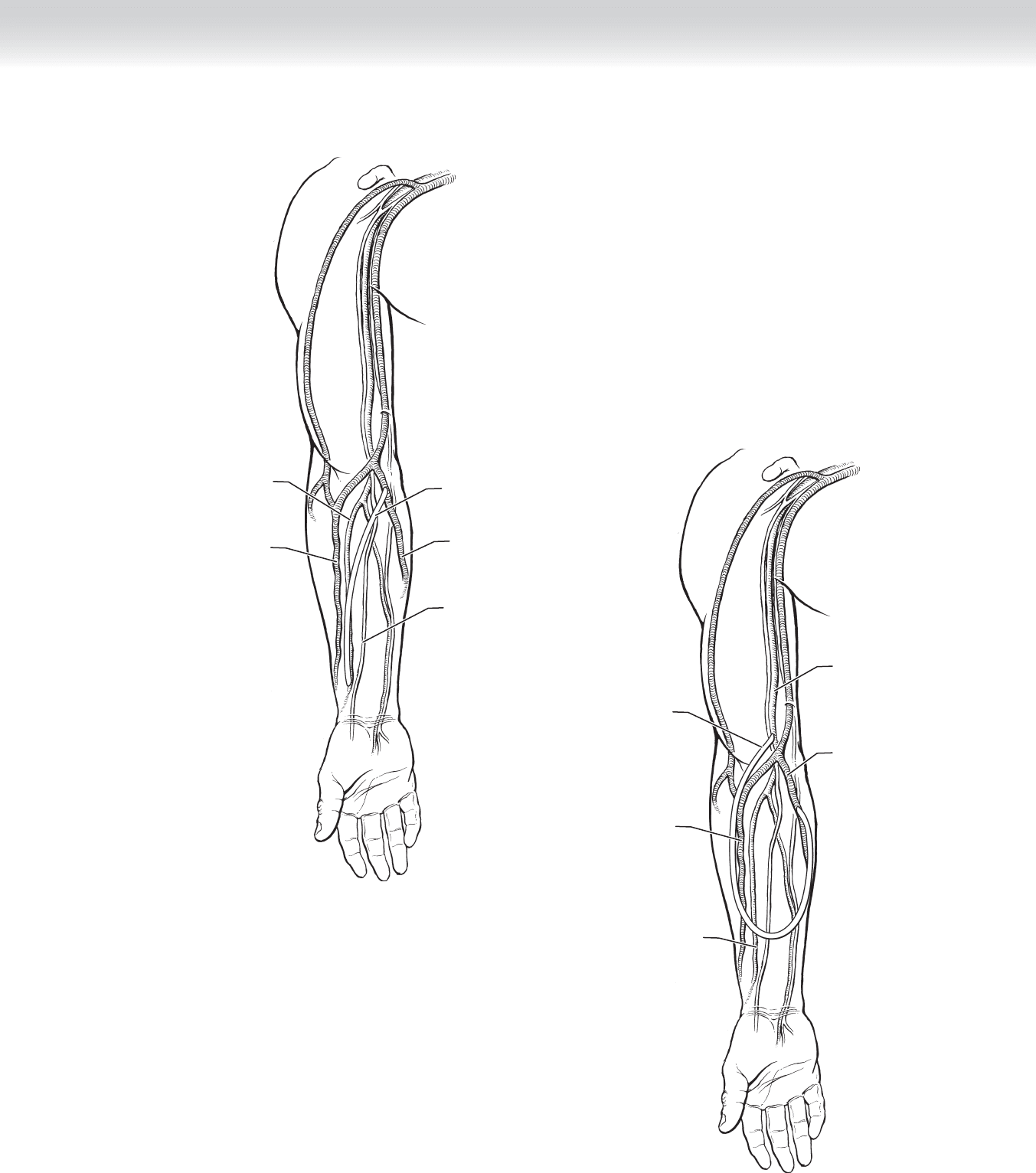
CHAPTER 90 • Hemodialysis Access Procedures 999
Cephalic vein
Radial artery
PTFE graft
Median nerve
Basilic vein
FIGURE 90 –17
Cephalic vein
Radial artery
PTFE graft
Brachial artery
Basilic vein
FIGURE 90 –18
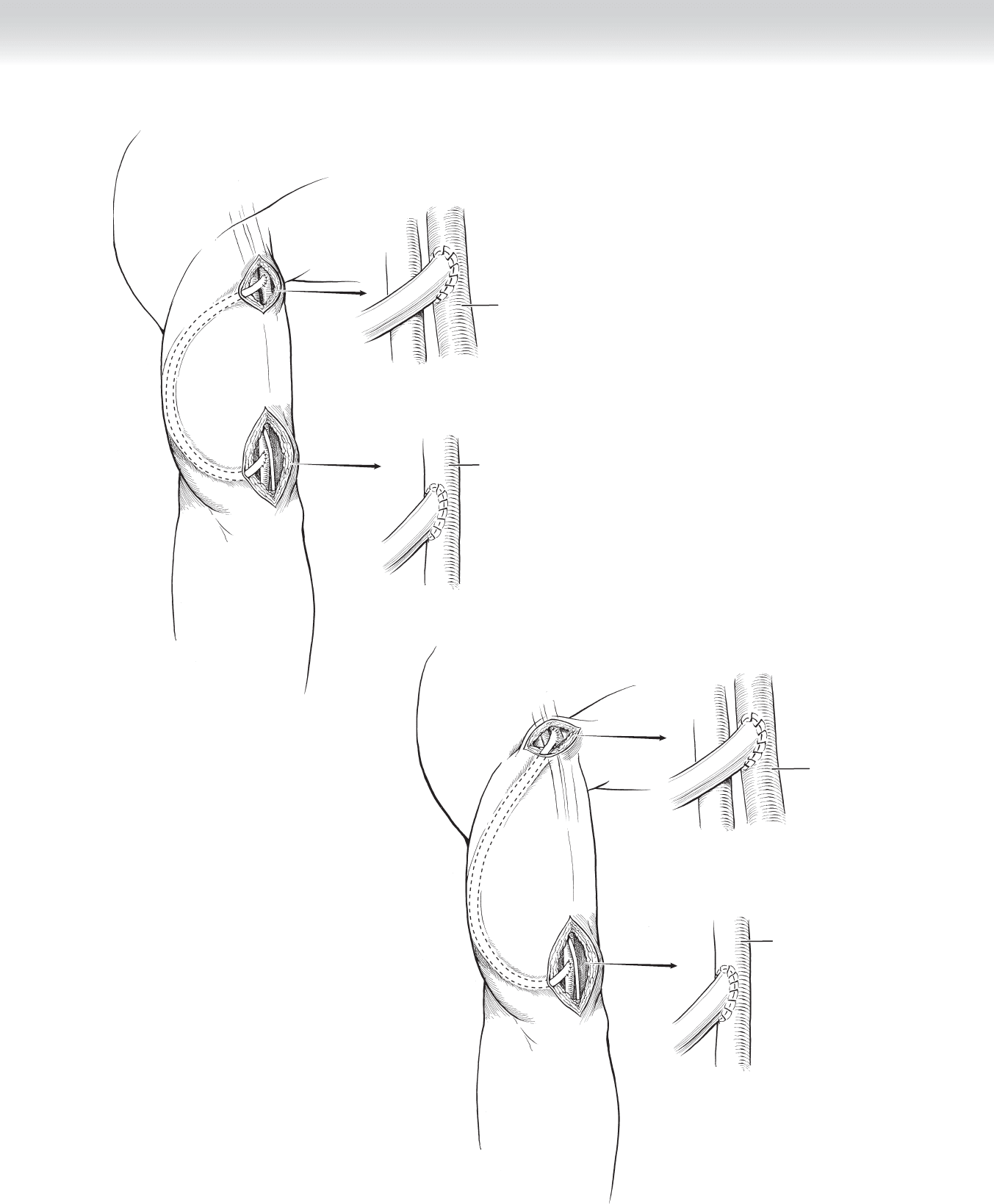
1000 Section XII • Vascular
Brachial artery
Basilic vein
FIGURE 90 –19
Brachial artery
Axillary vein
FIGURE 90 –20
